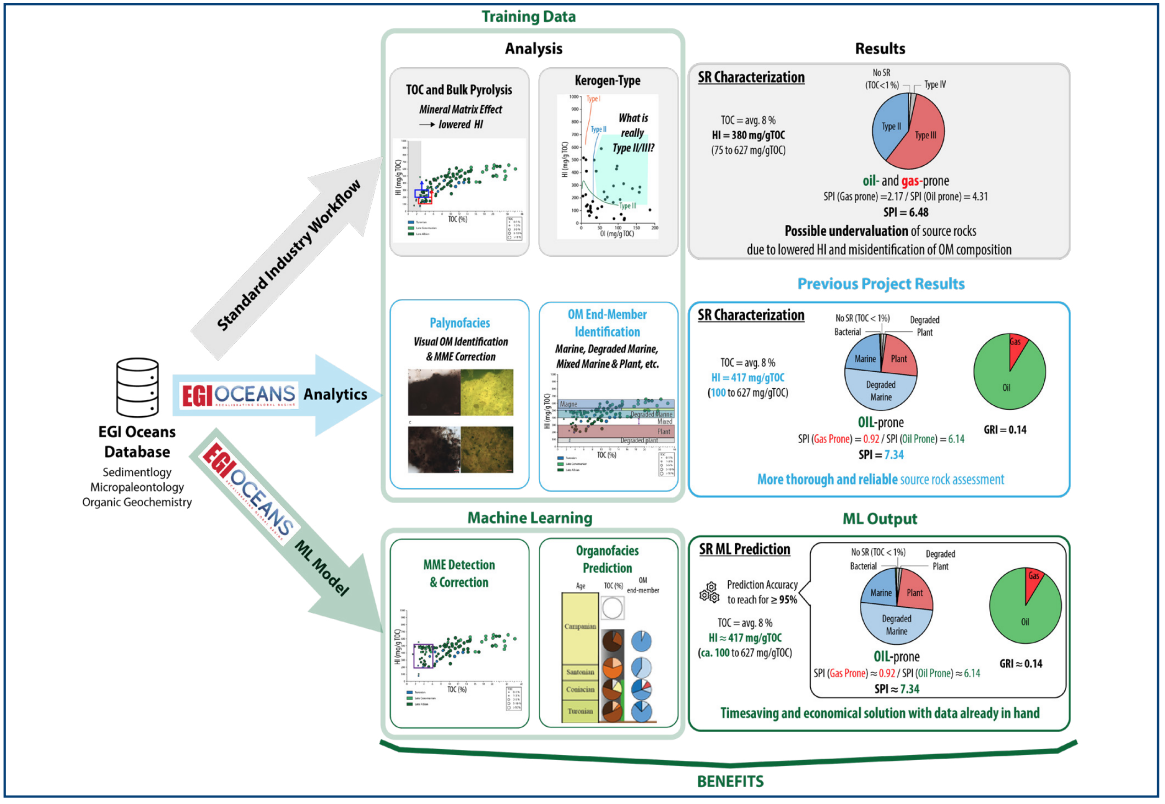EGI Oceans – Organofacies Machine Learning Model
Eiichi Setoyama, Ph.D. | Dhrupad R. Beti, Ph.D.| Sylvain Garel, Ph.D. | Bryony Richards, Ph.D.
Status: In Development | Report Number I 01408
Cost for sponsors:
- A fully integrated ML model for organofacies prediction, which includes an MME correction function.
- A hierarchy of variables/factors (e.g., TOC, HI, microfossil diversity, rock type, lamination, etc.) influencing accurate organofacies prediction.
- This project will be of interest to groups seeking to more tightly constrain organofacies, and thus generation potential, in petroleum basins worldwide.
- Sponsors will have exclusive, first-use rights to the tool.
- It will also benefit those companies seeking to incorporate advanced ML/digitalization techniques into their exploration toolkit as a means of developing better predictive capability.
SUMMARY
The project team is developing a machine learning (ML) model, trained using EGI Oceans Atlantic Margins data and worldwide data from the literature, as a means of predicting organofacies and organic matter (OM) composition in other basins or data sets. The methodology is designed to avoid the need for costly additional analysis (e.g., pyrolysis on isolated kerogen and palynofacies). It will also detect and correct for mineral matrix effect (MME), an artifact of anhydrous pyrolysis that can result in significant underestimation of generation potential (Figure 1).
The goal is to deliver an ML tool applicable to large data sets, not only on the Atlantic margins, but in other petroleum systems worldwide, delivering accurate information on generation potential and phase, and thus providing critical input to basin models.

Figure 1. Comparison of standard and EGI Oceans workfows with the proposed ML model workfow
CONTACT TO PURCHASE
